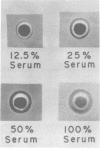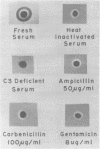Abstract
Congenital complement deficiency has been described in disseminated Neisseria infections. Its occurrences in humans with other kinds of infections have not been described. In the past, CH50 determinations have been used to detect these deficiencies, but this procedure is time consuming and cumbersome. A method of determining the presence of late component deficiencies or defects is described which is easy and inexpensive to perform. An agar pour plate with a serum-sensitive Escherichia coli strain is made, and 2.5-mm wells are put in the agar. Unknown fresh sera are used to fill the wells. An absence of a zone of bacterial growth inhibition around the well after incubation at 37 degrees C overnight indicates a late component defect or deficiency in the test serum. By applying this assay to 35 selected patients, four deficient patients were identified. One had a congenital C5 deficiency and three had C6 deficidencies. It is suggested that the assay be used as a screening test to study the relationship between congenital complement deficiencies and various kinds of infections, especially those caused by organisms which are partially serum sensitive.
Full text
PDF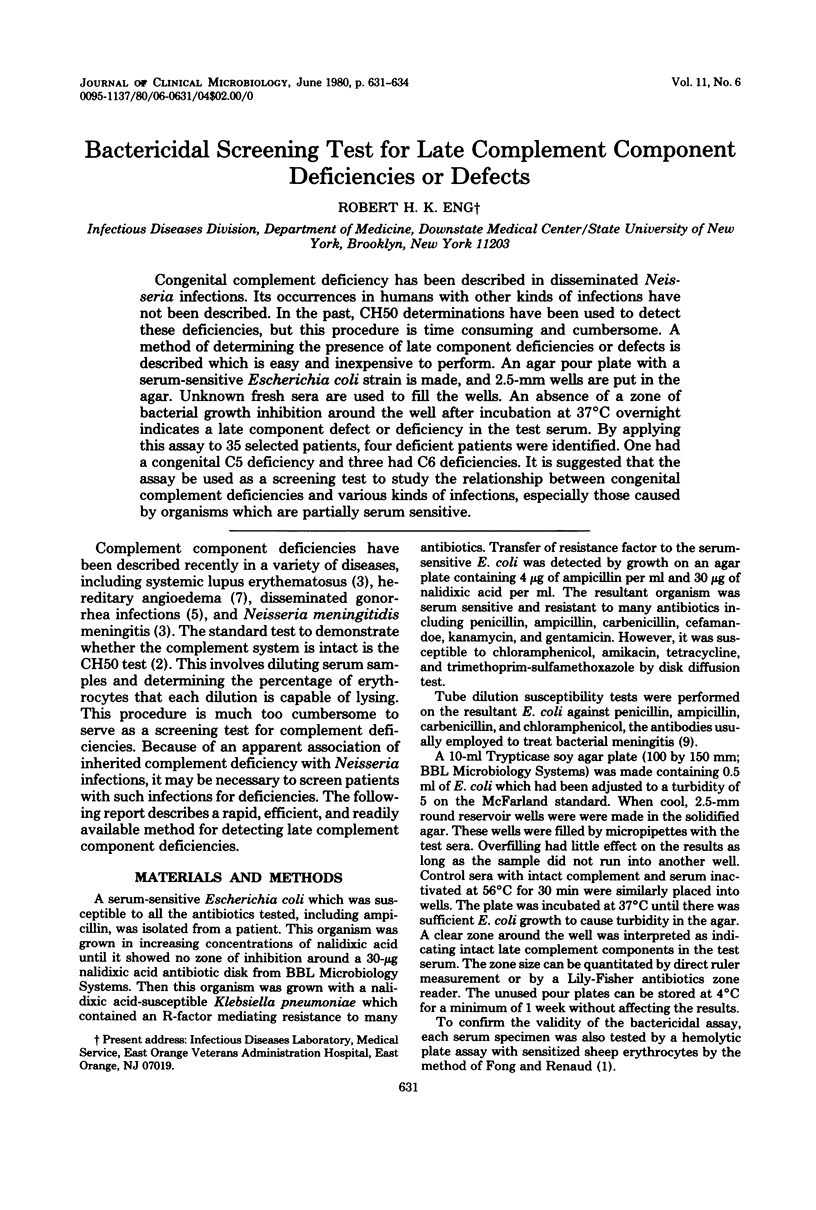
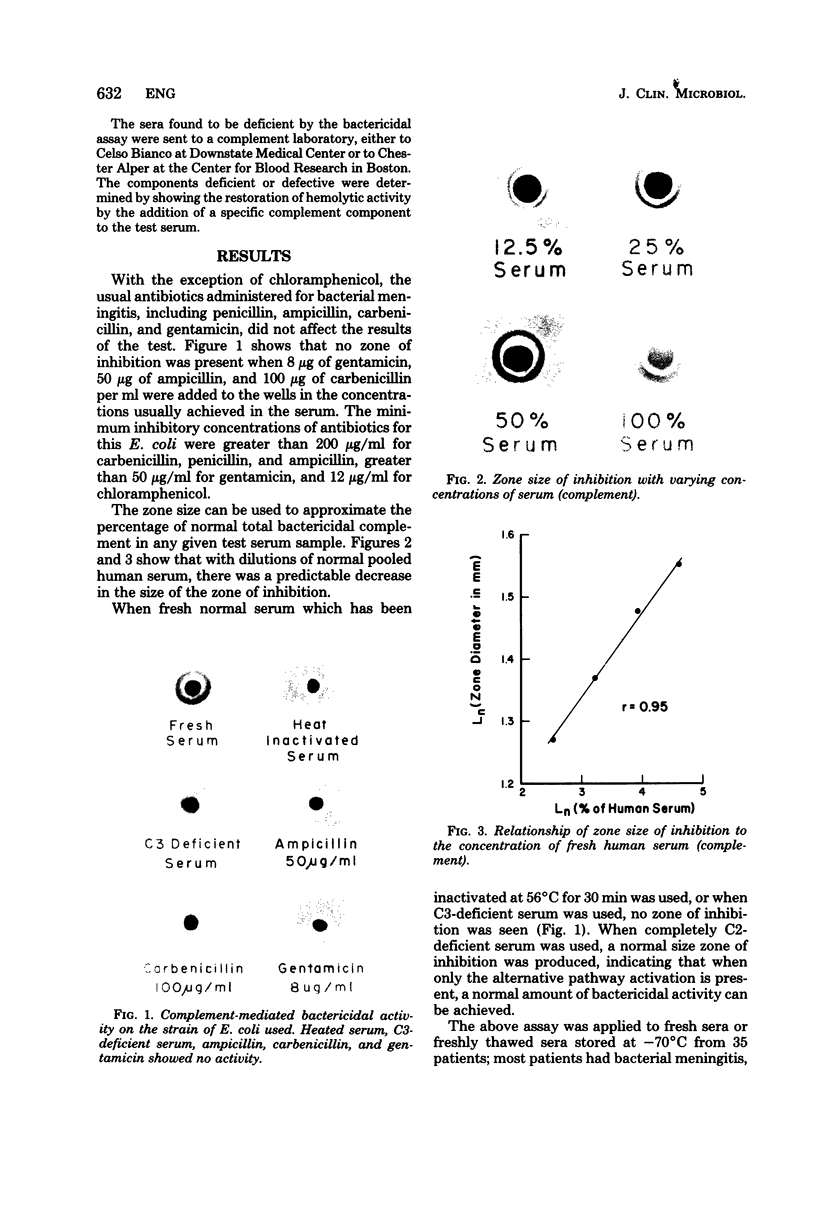
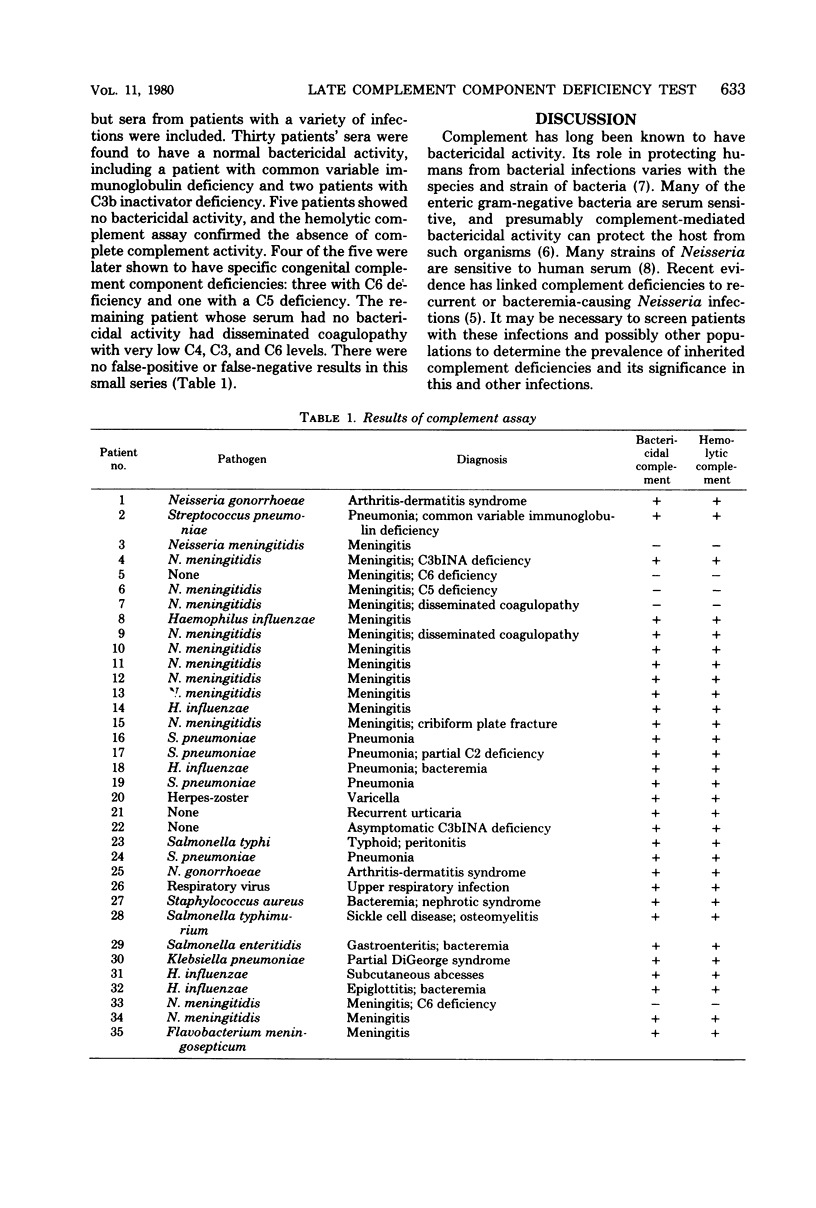
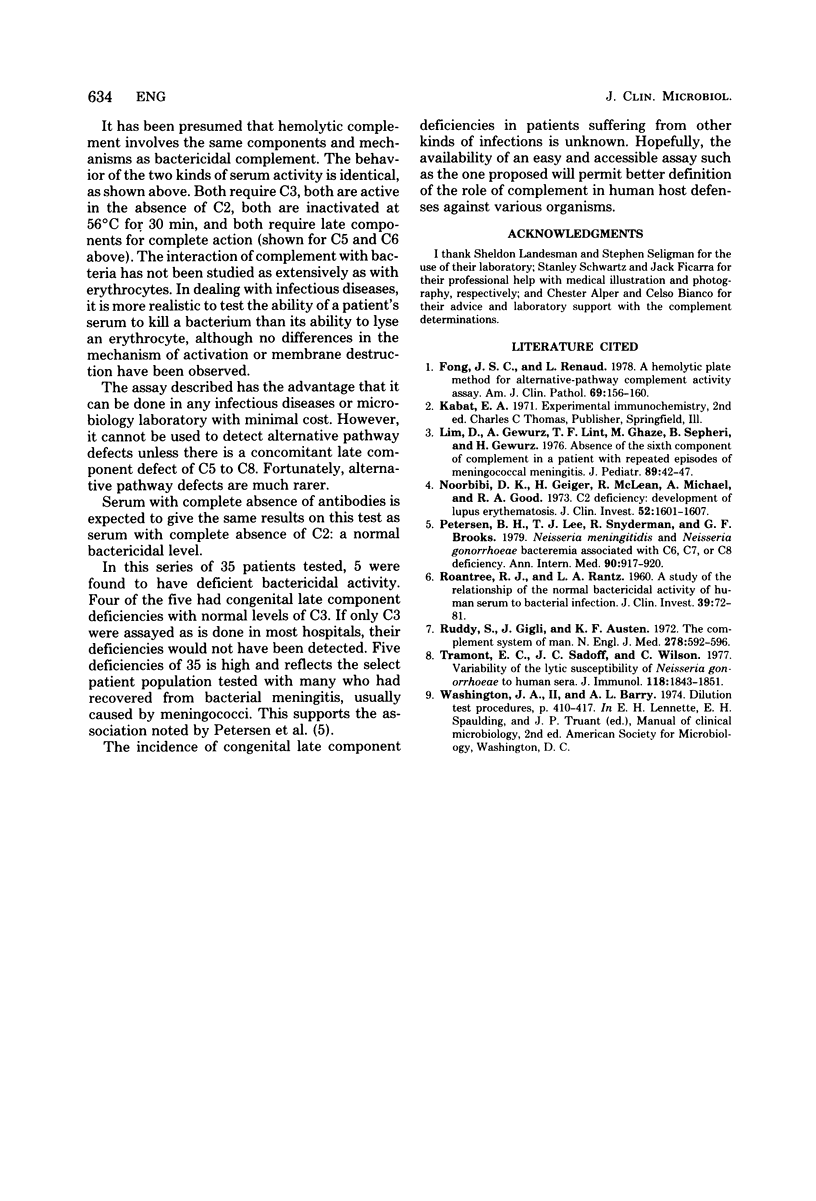
Images in this article
Selected References
These references are in PubMed. This may not be the complete list of references from this article.
- Day N. K., Geiger H., McLean R., Michael A., Good R. A. C2 deficiency. Development of lupus erythematosus. J Clin Invest. 1973 Jul;52(7):1601–1607. doi: 10.1172/JCI107337. [DOI] [PMC free article] [PubMed] [Google Scholar]
- Fong J. S., Renaud L. A hemolytic plate method for alternative-pathway complement activity assay. Am J Clin Pathol. 1978 Feb;69(2):156–160. doi: 10.1093/ajcp/69.2.156. [DOI] [PubMed] [Google Scholar]
- Lim D., Gewurz A., Lint T. F., Ghaze M., Sepheri B., Gewurz H. Absence of the sixth component of complement in a patient with repeated episodes of meningococcal meningitis. J Pediatr. 1976 Jul;89(1):42–47. doi: 10.1016/s0022-3476(76)80924-9. [DOI] [PubMed] [Google Scholar]
- Petersen B. H., Lee T. J., Snyderman R., Brooks G. F. Neisseria meningitidis and Neisseria gonorrhoeae bacteremia associated with C6, C7, or C8 deficiency. Ann Intern Med. 1979 Jun;90(6):917–920. doi: 10.7326/0003-4819-90-6-917. [DOI] [PubMed] [Google Scholar]
- Roantree R. J., Rantz L. A. A STUDY OF THE RELATIONSHIP OF THE NORMAL BACTERICIDAL ACTIVITY OF HUMAN SERUM TO BACTERIAL INFECTION. J Clin Invest. 1960 Jan;39(1):72–81. doi: 10.1172/JCI104029. [DOI] [PMC free article] [PubMed] [Google Scholar]
- Ruddy S., Gigli I., Austen K. F. The complement system of man. 3. N Engl J Med. 1972 Sep 21;287(12):592–596. doi: 10.1056/NEJM197209212871206. [DOI] [PubMed] [Google Scholar]
- Tramont E. C., Sadoff J. C., Wilson C. Variability of the lytic susceptibility of Neisseria gonorrhoeae to human sera. J Immunol. 1977 May;118(5):1843–1851. [PubMed] [Google Scholar]



